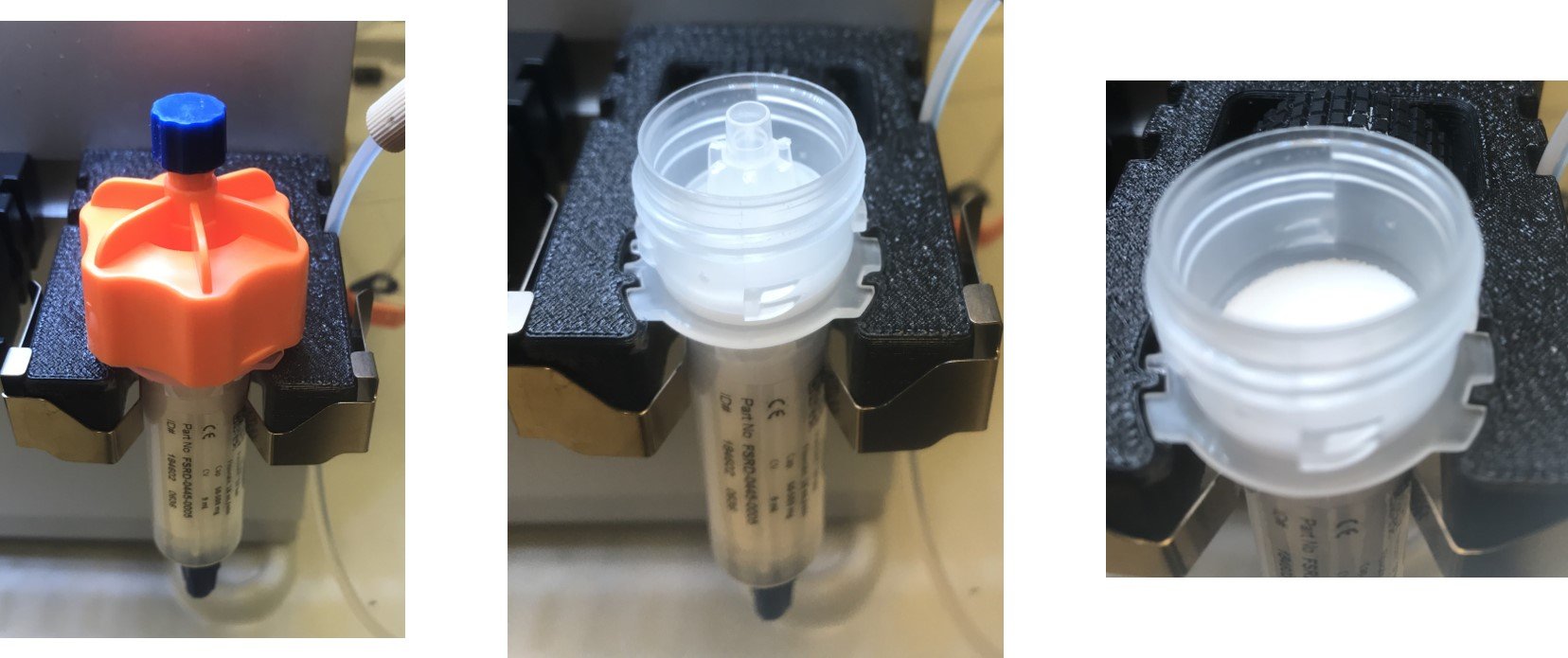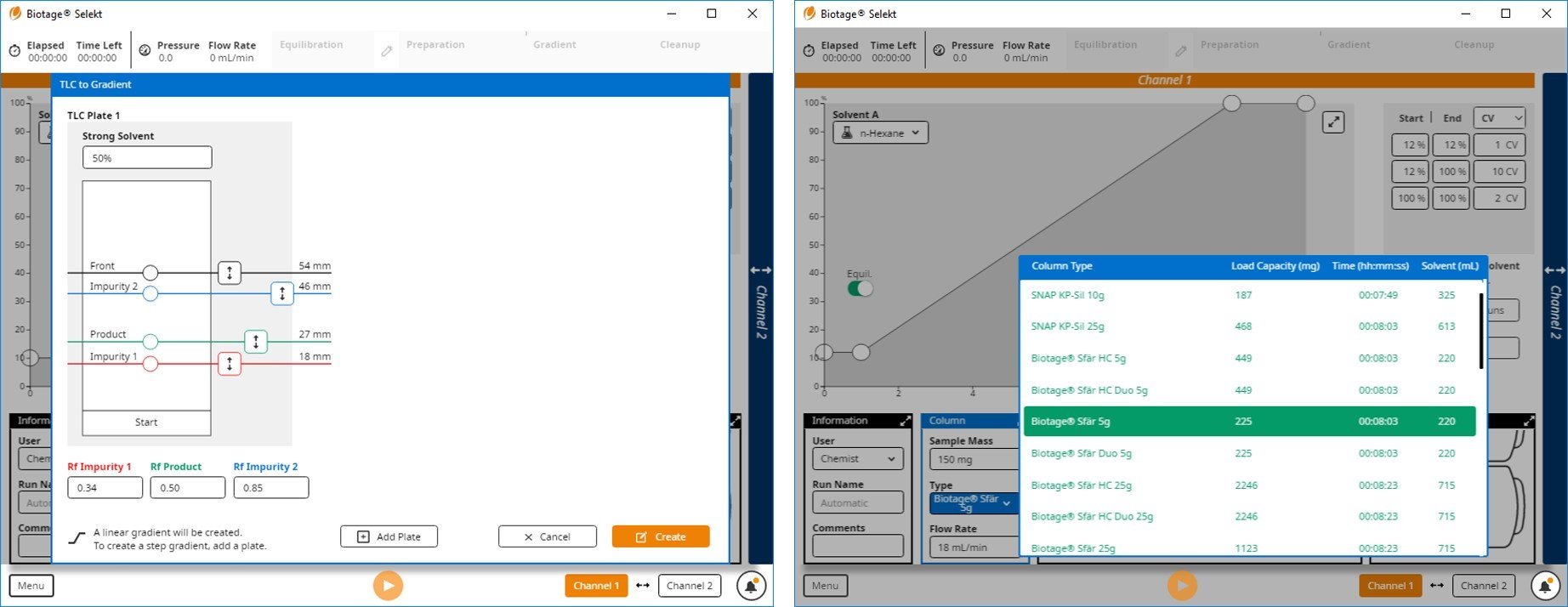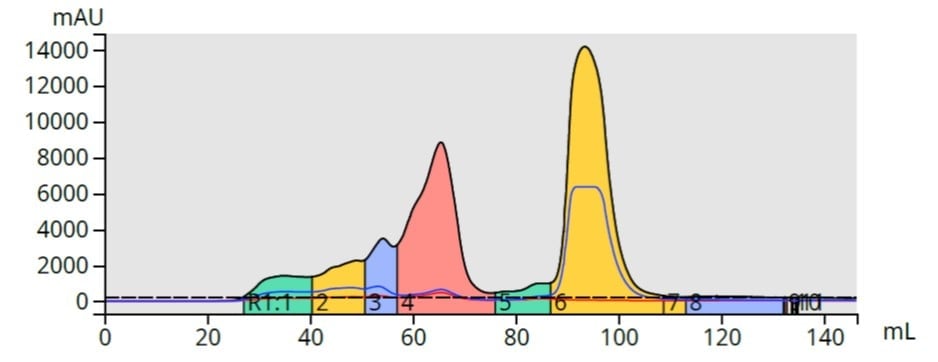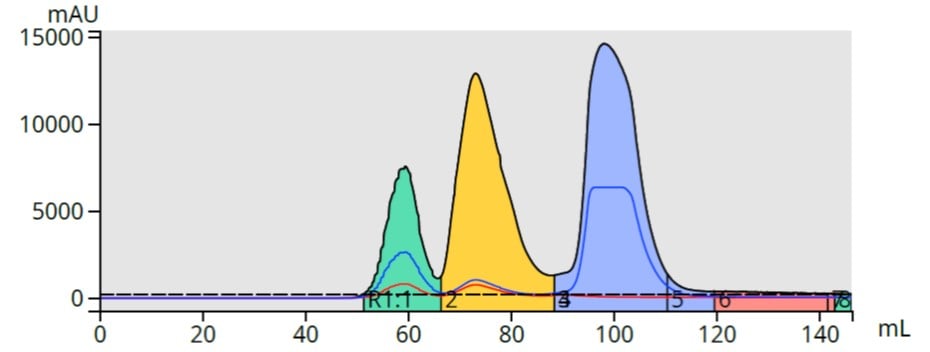Your choice of sample loading technique can, and likely will, affect the separation and purity of your targeted compound. While liquid loading is easy and often fit for purpose, it can provide some issues especially if large sample volumes are required relative to column size (> 1% of a column volume) or the dissolution solvent is too strong for the chosen purification method (e.g. injecting a methanol-solvated sample into a hexane/ethyl acetate mobile phase).
If you use flash columns with a removable cap, such as the Biotage® Sfär Duo product line, you can utilize the void space created for dry loading when the secondary flow distributor is removed, Figure 1.

Figure 1. A Sfär Duo column with removable cap provides an internal sample load option. Left - cap attached, Middle - cap removed showing secondary flow distributor, Right - with distributor removed.
Once the flow distributor is removed, you can fill the space one of three ways…
- -With loose sorbent onto which your crude material is mixed, absorbed, and dried
- -With a Samplet® cartridge to which your crude has been added and dried
- -With a self-filled Samplet cartridge after you emptied its contents then mixed, absorbed, and dried the crude to the Samplet sorbent
All of these techniques provide improved separations and target compound purity compared to liquid loading.
Of these three options, adding your crude solution to a pre-filled Samplet is easiest. It is, however, volume limited so samples should be concentrated.
Premixing and drying your crude with bulk sorbent eliminates the volume concerns. Of the two internal dry load options mentioned above, using the defined contents of the Samplet cartridge is simple and provides more accuracy than filling the void space with bulk media (no media measuring).
With that as some background, I am focusing this post on internal dry loading using the media in an emptied Samplet cartridge.
First, let’s look at the thin-layer chromatography (TLC) results using a 1:1 mixture of hexane and ethyl acetate of a 3-component mixture dissolved in acetone (2 grams each compound in 15 mL acetone, total volume ~ 20 mL) for a concentration of ~ 300 mg/mL.
My Biotage® Selekt system’s TLC to gradient feature determined the loading capacity for a 5-gram Sfär silica column was ~225 mg based on my targeted product with Rf 0.50, Figure 2. The linear gradient it created from the TLC data started at 12% ethyl acetate and ended with 100% ethyl acetate over 10-column volumes (CV).

Figure 2. TLC data can be used to create a gradient and suggest a load size for a particular column. Here, the TLC shows the target compound with an Rf of 0.5 using a solvent mixture of 50:50 hexane/ethyl acetate. Based on the Rf data for the target and its two nearest eluting neighbors, the suggested load is 225 mg for a 5 gram Biotage Sfär silica column.
With a crude mix concentration of 300 mg/mL, a liquid load of ~0.7 mL (210 mg) was required to approximate the suggest load of 225 mg. The results clearly illustrate the issues that can arise when liquid loading – severe sample spreading and de-banding leading to a poor separation of the target compound from the earlier eluting compound, Figure 3.

Figure 3. Liquid load purification of the crude sample on a 5-gram Biotage Sfär silica column yields very poor separation results. The target compound (pink) is poorly separated from the lead compound which has an ill-defined peak shape.
Dry loading
In contrast, purification of the dry loaded crude, also 210 mg, yielded an excellent purification of my targeted compound, Figure 4.

Figure 4. Results from dry loading using a Samplet cartridge filled with sample pre-adsorbed to silica show a complete separation of the target compound (yellow peak) from the impurities.
So, the moral of this story is that although liquid loading in flash chromatography is convenient, chances are the results achieved using simple dry loading will be better.
If you're interested in seeing dry loading techniques, check out this video below.
After watching this video, are you still interested in learning more about flash chromatography? Download our white paper Successful Flash Chromatography.

 Organic Workflow
Organic Workflow Peptide Workflow
Peptide Workflow Scale-Up Flash Purification
Scale-Up Flash Purification  Sample Preparation
Sample Preparation Biomolecule Purification
Biomolecule Purification Oligo synthesis
Oligo synthesis Scavengers and Reagents
Scavengers and Reagents Service & Support
Service & Support Accessories & Spare parts
Accessories & Spare parts Investors
Investors Reports & News
Reports & News The Share
The Share Corporate Governance
Corporate Governance Calendar
Calendar Sustainability
Sustainability Our Offering
Our Offering Our History
Our History Our Locations
Our Locations Leadership
Leadership